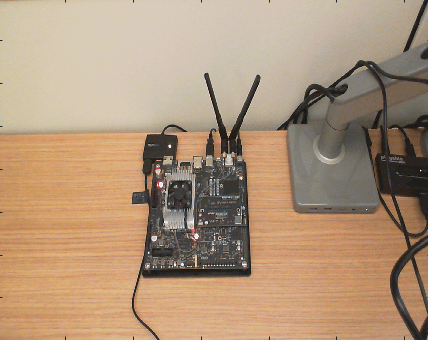webcam
Create webcam object to acquire images from a USB webcam attached
to the NVIDIA hardware
Add-On Required: This feature requires the MATLAB Coder Support Package for NVIDIA Jetson and NVIDIA DRIVE Platforms add-on.
Syntax
Description
wcam = webcam(hwObj)webcam object wcam and connects to a
web camera that is attached to the NVIDIA DRIVE® or Jetson™ hardware. When the webcam object is created, it connects to
the camera and establishes exclusive access to stream data. You can preview the data and
acquire images by using the snapshot function.
wcam = webcam(hwObj,cameraName)cameraName. Use this syntax
when you have more than one camera connected to the NVIDIA® hardware.
wcam = webcam(hwObj,cameraIndex)cameraIndex. Use this syntax
when you have more than one camera connected to the NVIDIA hardware.
wcam = webcam(hwObj,cameraName,resolution)
Note
Because the software establishes exclusive access to the camera, you cannot
associate more than one object to the same camera. Before code generation and execution,
you must clear the webcam object by using the clear function.
Examples
Input Arguments
Output Arguments
Version History
Introduced in R2018b
See Also
Functions
jetson|drive|snapshot|getCameraList|image|imageDisplay
Objects
jetson|drive|webcam|imageDisplay
Topics
- Sobel Edge Detection on NVIDIA Jetson Nano Using Raspberry Pi Camera Module V2
- Getting Started with the MATLAB Coder Support Package for NVIDIA Jetson and NVIDIA DRIVE Platforms
- Deploy and Run Sobel Edge Detection with I/O on NVIDIA Jetson Nano
- Build and Run an Executable on NVIDIA Hardware
- Stop or Restart an Executable Running on NVIDIA Hardware
- Run Linux Commands on NVIDIA Hardware

